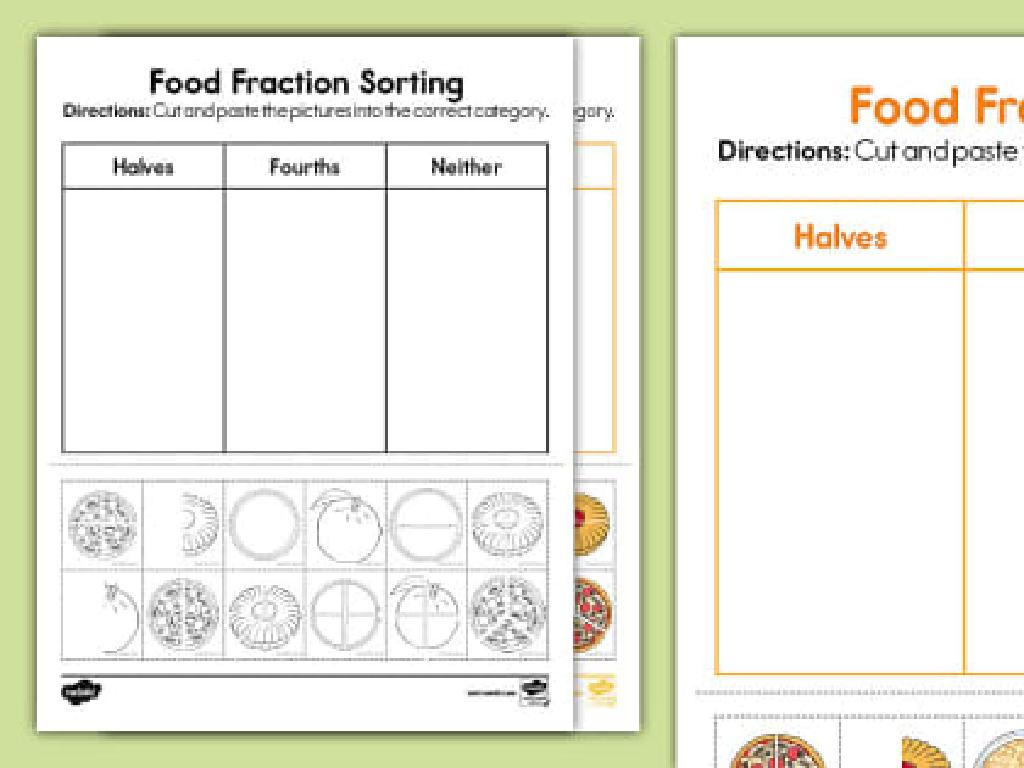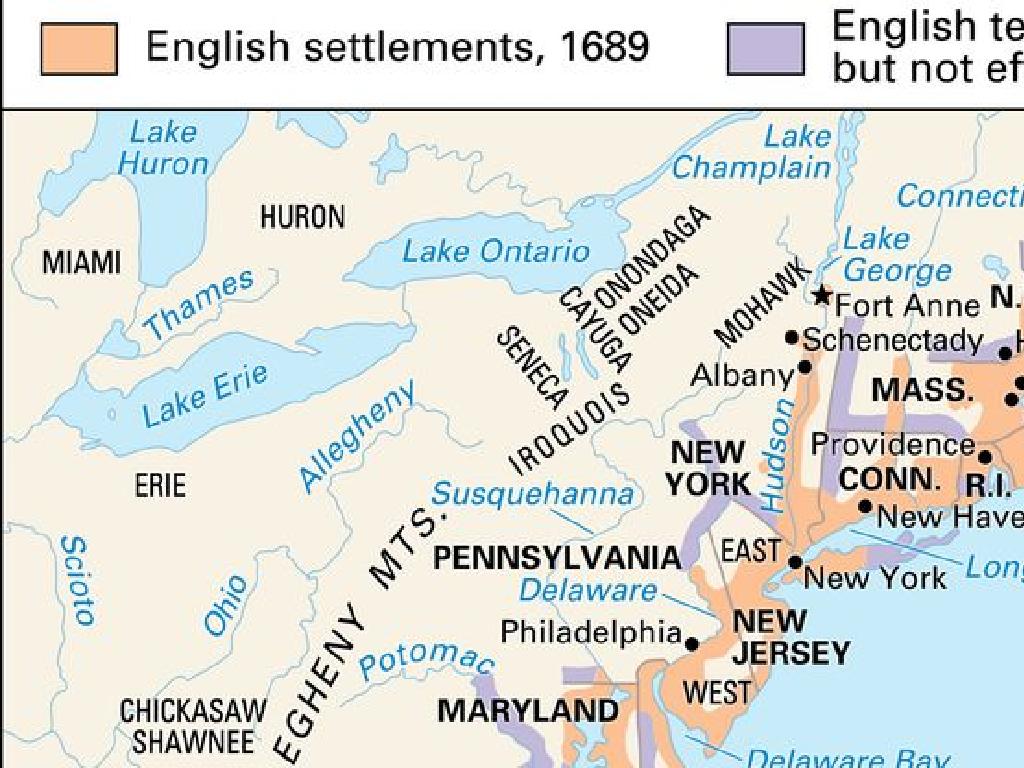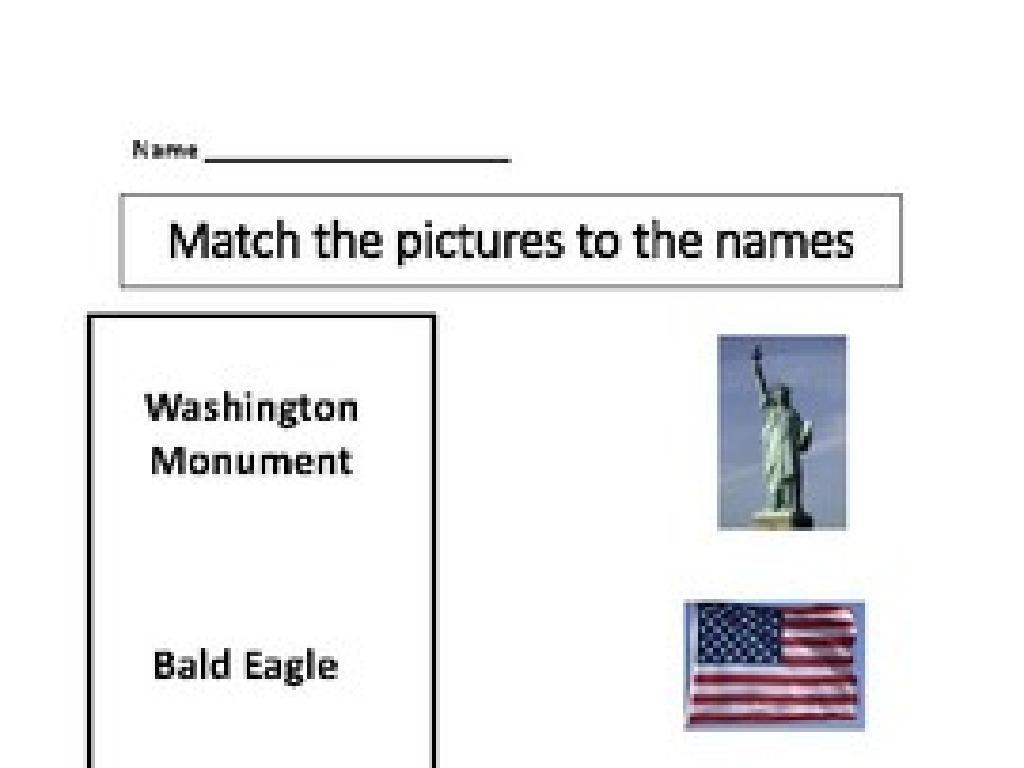Identify Linking Verbs, Predicate Adjectives, And Predicate Nouns
Subject: Language arts
Grade: Eighth grade
Topic: Verb Types
Please LOG IN to download the presentation. Access is available to registered users only.
View More Content
Exploring Verb Types: Linking Verbs and Predicates
– What are linking verbs?
– Connect the subject with more information about the subject
– Predicate adjectives explained
– Adjectives that follow linking verbs and describe the subject
– Predicate nouns unveiled
– Nouns that follow linking verbs and rename the subject
– Significance of recognizing verb types
|
This slide introduces students to the concept of linking verbs and how they differ from action verbs by connecting the subject of a sentence to additional information about the subject, rather than showing action. Predicate adjectives and nouns are the types of words that can follow linking verbs, providing more details or renaming the subject. Understanding these concepts is crucial for students as it enhances their grammatical knowledge and aids in sentence construction, comprehension, and variation in writing. Encourage students to identify linking verbs in sentences and distinguish between predicate adjectives and nouns. Provide examples and exercises to reinforce learning.
Exploring Linking Verbs
– Define Linking Verbs
– Verbs that connect subject to a state of being, like ‘am’, ‘is’, ‘are’.
– Common linking verbs list
– ‘Am’, ‘is’, ‘are’, ‘was’, ‘were’ are examples of linking verbs.
– Linking verbs connect subject to info
– They link the subject to a subject complement that describes or identifies it.
– Linking verbs show no action
– Unlike action verbs, linking verbs do not describe any action.
|
This slide introduces the concept of linking verbs to the students. Begin by defining linking verbs as those that do not express action but instead connect the subject of the sentence to additional information about the subject. Provide examples of common linking verbs and ensure students understand that these verbs are used to link the subject to a state of being or condition. Emphasize that linking verbs are not action verbs; they do not show what the subject is doing, but rather what the subject is or is like. Encourage students to identify linking verbs in sentences and understand their role in providing more information about the subject.
Exploring Predicate Nouns and Adjectives
– Define Predicate Noun
– A noun that renames the subject after a linking verb, e.g., ‘Katie is a dancer.’
– Define Predicate Adjective
– An adjective that describes the subject after a linking verb, e.g., ‘The sky seems blue.’
– Examples of Predicate Nouns
– Examples of Predicate Adjectives
|
This slide aims to clarify the concepts of predicate nouns and predicate adjectives for the students. Predicate nouns and adjectives are both linked to the subject of the sentence through a linking verb. The predicate noun restates the subject, while the predicate adjective describes it. Provide clear examples for each, such as ‘The teacher is a mentor’ (predicate noun) and ‘The flowers smell fragrant’ (predicate adjective). Encourage students to create their own sentences using predicate nouns and adjectives to reinforce their understanding. Discuss how these components are essential in adding information and detail to sentences, enhancing both writing and comprehension skills.
Identifying Linking Verbs
– Finding linking verbs in sentences
– Linking verbs connect the subject to a subject complement.
– Practice with example sentences
– ‘The flowers smell fresh.’ – ‘smell’ is the linking verb connecting ‘flowers’ to ‘fresh’.
– Tips to differentiate from action verbs
– Linking verbs describe a state of being, not an action like ‘run’ or ‘write’.
|
This slide aims to help students identify and understand the role of linking verbs in sentences. Linking verbs, unlike action verbs, do not show action but instead connect the subject of the sentence to additional information about the subject. Start by explaining the concept of linking verbs and their function. Then, move on to interactive practice with example sentences, asking students to identify the linking verbs. Provide tips to distinguish linking verbs from action verbs, such as looking for verbs that can be replaced by ‘is’ or ‘are’ without changing the sentence’s meaning. Encourage students to ask themselves if the verb indicates an action or a state of being to determine its type.
Predicate Nouns and Adjectives in Action
– Identify predicates in sentences
– Find the subject and see what follows the linking verb
– Differentiate nouns from adjectives
– Predicate nouns rename the subject, adjectives describe it
– Practice with underlined words
– Look at the examples and decide the role of underlined words
– Classify as nouns or adjectives
– Use context to determine if the word is renaming or describing
|
This slide aims to help students understand and identify predicate nouns and adjectives within sentences. Start by explaining that a predicate noun or adjective follows a linking verb and relates back to the subject. Emphasize the difference: predicate nouns rename the subject, while predicate adjectives describe it. Provide clear examples on the board and guide students through the process of identifying the subject, the linking verb, and the predicate noun or adjective. For the practice activity, prepare sentences with underlined words and ask students to classify them, explaining their reasoning. This will reinforce their understanding and help them distinguish between the two concepts. Encourage participation and provide immediate feedback to solidify learning.
Let’s Practice Together: Verb Detective
– Pair up for ‘Verb Detective’ activity
– Find linking verbs in paragraphs
– Linking verbs connect the subject to more information
– Identify predicate nouns and adjectives
– Predicate nouns/adjectives follow linking verbs and describe the subject
– Share discoveries with the class
|
This interactive class activity is designed to reinforce the students’ understanding of linking verbs, predicate nouns, and predicate adjectives. Students will work in pairs to enhance collaboration skills. Provide each pair with a paragraph and instruct them to underline linking verbs, circle predicate nouns, and box predicate adjectives. After the activity, ask pairs to share their findings, fostering a collaborative learning environment. As a teacher, circulate the room to offer guidance and ensure students are on the right track. Possible variations of the activity could include creating a competition to see which pair can find the most verbs and predicates or having students create their own sentences using the identified words.
Class Activity: Crafting Sentences with Linking Verbs
– Write sentences with linking verbs
– Include a predicate noun in one
A predicate noun renames the subject, e.g., ‘My brother is a doctor.’
– Include a predicate adjective in another
A predicate adjective describes the subject, e.g., ‘The sky looks ominous.’
– Share and discuss as a class
|
This activity is designed to reinforce the students’ understanding of linking verbs, predicate nouns, and predicate adjectives. Students will apply their knowledge by writing sentences that incorporate these elements. Encourage creativity and use of diverse linking verbs beyond ‘is’ and ‘are.’ After writing, students will share their sentences with the class, providing an opportunity for peer learning. As they share, discuss why the chosen verbs are linking verbs and how the predicate nouns and adjectives complement them. This will help solidify their understanding of how different components of a sentence work together to convey meaning.
Wrapping Up: Linking Verbs & Predicates
– Recap: Linking verbs & predicates
– Significance in writing
– Understanding verb types enhances clarity and precision in writing.
– Homework: Worksheet completion
– Identify linking verbs, predicate nouns, and adjectives in sentences.
– Next class: Review & discuss
|
As we conclude today’s lesson, it’s important to recap the key concepts of linking verbs, predicate nouns, and predicate adjectives. Emphasize to students how recognizing these elements can greatly improve their writing skills by allowing them to create clearer and more descriptive sentences. For homework, students are expected to complete a worksheet that will reinforce their understanding by having them identify and work with these components in various sentences. In the next class, we will review the homework, address any questions, and discuss the worksheet to ensure a solid grasp of the material.





